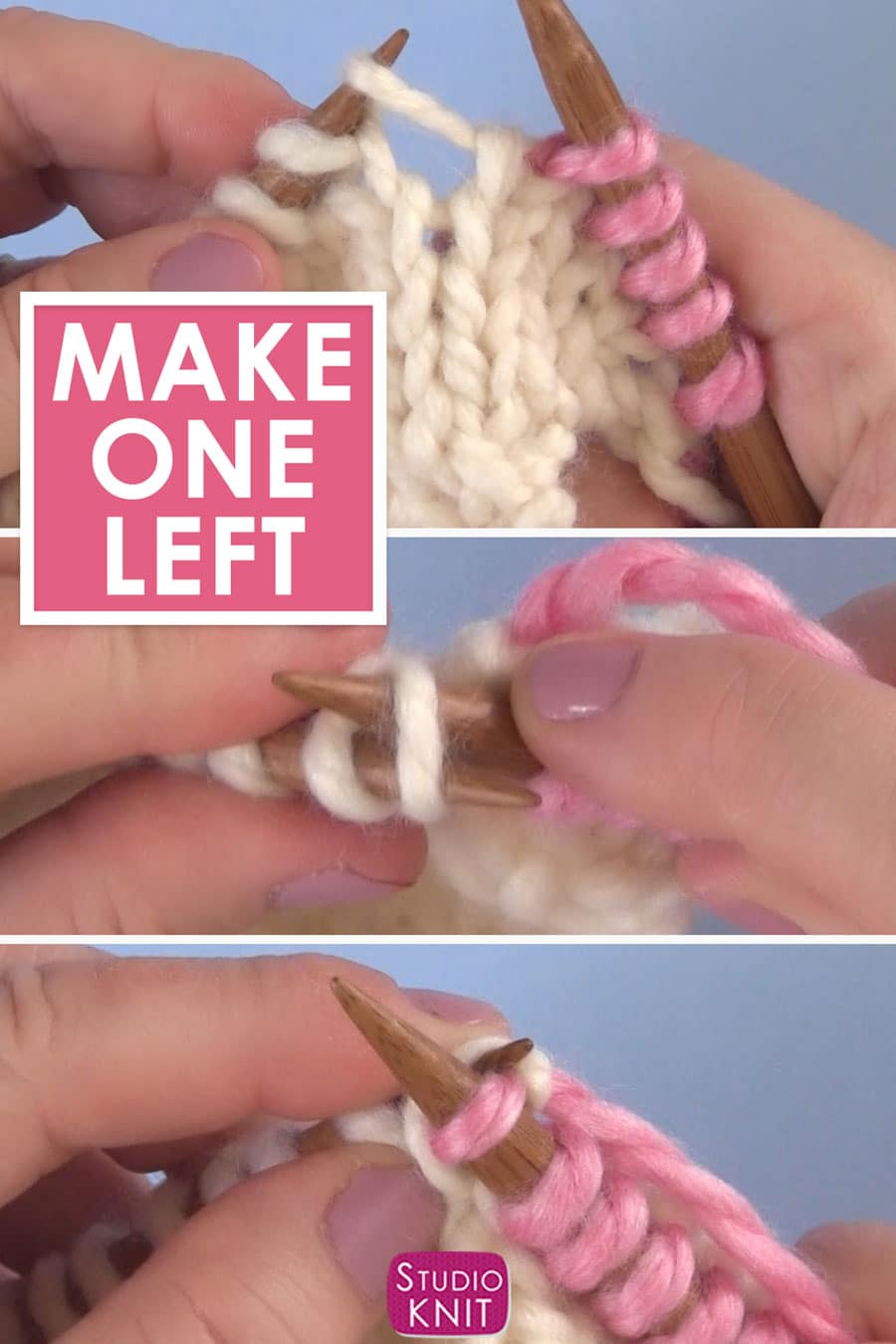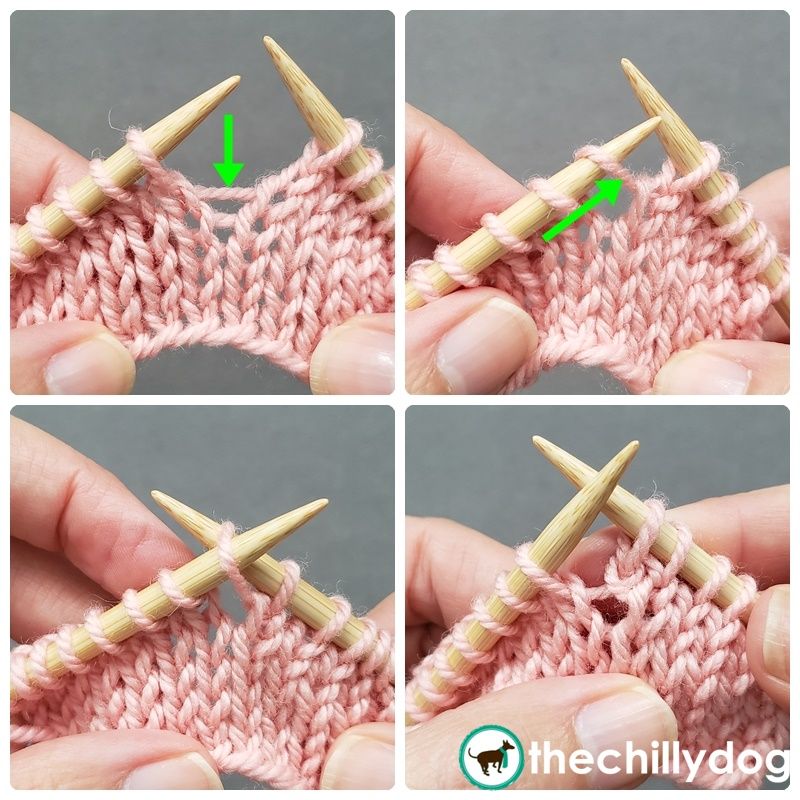Make One Left Knit
Make One Left Knit - Web the m1r increase slants to the right, while the m1l slants to the left. Typically, this will be used when making an increase in the first half of the right side of your knitted work. The new stitch will slant either right or left depending on how you lift that horizontal yarn and knit it. You should be able to see a little strand connecting the two stitches one row below. Not just milk’s perfect sidekick, but also great for providing you with a pleasant experience and helping this website run effectively. This content is protected by copyright. Web make one left (m1l) is an increasing stitch that leans to the left, it often comes in pairs with m1r (make one right) which leans to the right. Knit the next stitch off your main needle. Instagram (aka where i hang out): Work your row until the point where your pattern calls for the m1l. Web the abbreviation m1l in knitting patterns means to make one left. Web the m1r increase slants to the right, while the m1l slants to the left. A make one left and a make one right are demonstrated. Knit up to the position where you want to increase. They’re perfect for sweaters, socks, and anywhere else that you need paired. These increases are mirror images of each other, as one leans to the left and the other to the right. This content is protected by copyright. This technique creates an invisible increase that slants to the left (\). The added stitch looks nice and blends well into the project. Web make 1 purl stitch left (m1pl) — remade by hand. Web why do knit designers like the make one right and make one left increase? This increase method makes a. M1l is a great increase stitch for the knit side of your work. M1r is worked from back to front, while m1l is worked from front to back. Web make one left or make one right are simply single increases. Make one increases are created by working into the strand in between two stitches on your knitting needles. Knit the next stitch off your main needle. Take your main needle and going from in front, insert it under the strand between your two stitches, and lift up. Work your row until the point where your pattern calls for the m1l.. The new stitch will slant either right or left depending on how you lift that horizontal yarn and knit it. These increases are mirror images of each other, as one leans to the left and the other to the right. The most basic way to increase is. Knit this bar through the back loop (this twists it into a nice. M1l = make one left leaning stitchlearn how to work a m1l stitch in knitting. Lift that strand back to your left needle coming in from the front. Take your main needle and going from in front, insert it under the strand between your two stitches, and lift up. Sometimes a knitting pattern will simply ask you to m1 (aka.. Web make one left (m1l) is an increasing stitch that leans to the left, it often comes in pairs with m1r (make one right) which leans to the right. Not just milk’s perfect sidekick, but also great for providing you with a pleasant experience and helping this website run effectively. (this looks like a m1l when viewed from the knit. M1l = make one left leaning stitchlearn how to work a m1l stitch in knitting. 218k views 11 years ago. Knit the next stitch off your main needle. 15k views 6 years ago knitting increases & decreases. With your working needle, insert your tip into the back loop of the newly formed stitch, and knit it off the needle. The m1 increase is fairly simple, barely visible on the right side of the knitting, and also won't leave any unwanted holes. They are both knitted in a very similar way. Web m1r (make one right) and m1l (make one left) are knitting techniques called increases that are used to add stitches to your work. (this looks like a m1l. Web the abbreviation m1l in knitting patterns means to make one left. (this looks like a m1l when viewed from the knit side) for more information on knit increases visit: The m1 increase is fairly simple, barely visible on the right side of the knitting, and also won't leave any unwanted holes. This technique creates an invisible increase that slants. Left knitting increase m1, m1l. Web in knitting patterns, m1r means “make one right” and m1l means “make one left”. This technique creates an invisible increase that slants to the left (\). A swatch increased with m1pl on the wrong side. Take your main needle and going from in front, insert it under the strand between your two stitches, and lift up. A make one left and a make one right are demonstrated. They are both knitted in a very similar way. M1l is a great increase stitch for the knit side of your work. Web m1r (make one right) and m1l (make one left) are knitting techniques called increases that are used to add stitches to your work. Insert your left needle into the loop you just lifted coming in from the front. You should be able to see a little strand connecting the two stitches one row below. If your pattern simply tells you to make 1 (m1), this is the same as m1l. Sometimes a knitting pattern will simply ask you to m1 (aka. The m1 increase is fairly simple, barely visible on the right side of the knitting, and also won't leave any unwanted holes. Web why do knit designers like the make one right and make one left increase? Join this new loop to your row with a ktbl (knit through back loop).
M1L or Make One Left Knitting Tutorial YouTube

How to knit M1L (Make 1 Left) Increasing 1 stitch YouTube

Make One Left (M1L) Quick 1 Minute Knitting Tutorial YouTube

How to knit Make one Left (M1L) for beginners step by step tutorial

Make One Knitting Increase (M1, M1L, M1R) Studio Knit

How to Make 1 M1L knitting Make one left Learn to knit how to

How to knit Make one left (M1L ) tutorial YouTube

m1l Make One Left Leaning Knit Stitch YouTube

Learn to Knit m1L (Make One Left) YouTube

Knit Inc Sampler Squares Make 1 Left and Make 1 Right
Lift That Strand Back To Your Left Needle Coming In From The Front.
Does Your Pattern Call For Knitting A M1Pl And You Have No Clue What It Means Or How To Knit It.
When Shaping Your Knitting Directional Increases Are Essential.
Instagram (Aka Where I Hang Out):
Related Post: